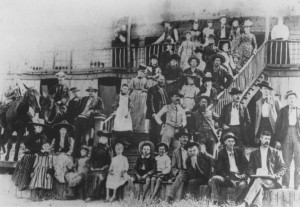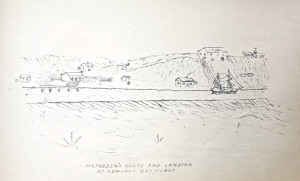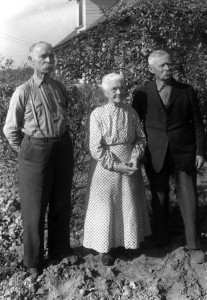
“History of Transportation,” by Helen Lundeberg, 1039
This massive petrachrome mural in Inglewood, California was recently restored.
The Federal Art Project (FAP) encompassed a wide variety of art forms—from sculpture and fresco to oil-on-canvas and wood relief. However, few realize that an entirely new medium was invented by an FAP artist solely for use on public projects in Southern California.
American artist Stanton MacDonald-Wright first achieved prominence in the art world when he and fellow artist Morgan Russell co-founded the Synchromism movement, an approach to painting that analogized color to music. These works were among the first abstract paintings in American art.
During the 1930s, while MacDonald-Wright was in charge of the FAP in Southern California he devised an entirely new method of creating murals, which he called “petrachrome.”
The petrachrome process is significant not only to those interested in the New Deal but also to art historians in general. The process was similar in principle to a paint-by-numbers. Cement was first tinted with different pigments corresponding to the different sections of the mural. Next, crushed rock, glass, or tile was added to the mixture, which was then applied to the mural surface. Typically, the different color sections were delineated by strips of brass.
The colored cement was allowed to harden and then polished, creating a bold, striking appearance. Instead of a mural being painted onto a surface, the petrachrome process was designed so that the mural was the surface. Reports at the time claimed that the result “more enduring than marble” and “should last as long as the remaining great monuments of antiquity.”
Once the FAP was terminated in the early 1940s the petrachrome method seems to have disappeared completely, leaving only a handful of examples scattered around Southern California. The most celebrated of these is Helen Lundeberg’s “History of Transportation” in Inglewood. Recently the subject of an extensive renovation, Lundeberg’s mural is 8 feet tall and 240 feet long—making it one of the largest New Deal artworks in California.
Other examples of petrachrome murals can be found in San Diego’s Presidio Park, Santa Paula High School, Upland Elementary School, Santa Monica City Hall, and Canoga Park High School.
The majority of petrachrome murals still exist today. That they, by and large, remain in good condition is a testament to their resilience. I hope to publish a fully illustrated volume dedicated to preserving the legacy of MacDonald-Wright’s petrachrome process.




